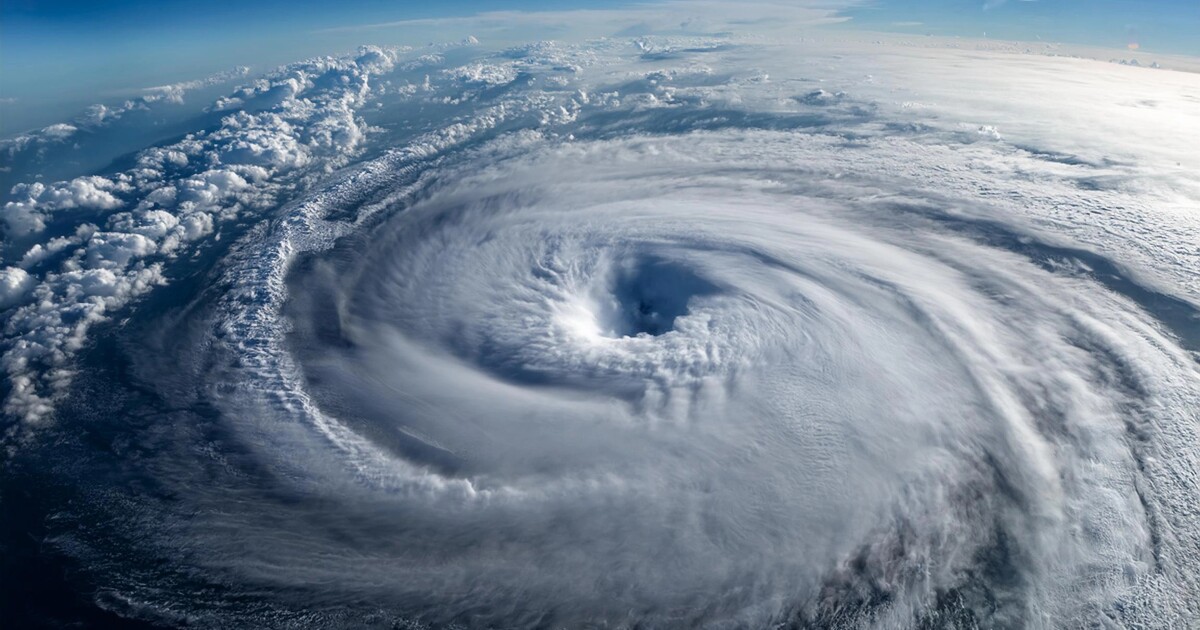There have been some wildly ambitious schemes to knock the power out of hurricanes and cyclones over the years. Now, scientists believe they have come up with a way to successfully subdue these destructive storms, long before they have a chance to reach land.
In a first-of-a-kind study, researchers at The Australian National University (ANU) have modeled what they believe is a method to shut down a growing storm by using different-shaped aerosol particles that can disrupt nature, knocking the destructive power out of these systems.
“Others have looked at the impact of aerosols on a fully grown cyclone – when it might be about to hit land,” said Roslyn Prinsley, an associate professor at ANU. “We thought, it may be easier to stop them before they start. We’ve now shown it’s possible to reduce their intensity in those early stages.”
To date, storm-killing efforts haven’t been impactful, largely because tropical cyclones (TCs) are unpredictable and incredibly challenging to study. In this latest study, the ANU team has aimed to take the guesswork out of diffusing a hurricane’s power, and used comprehensive geophysical models to demonstrate how tiny particles of varied shapes can fundamentally alter a storm’s ability to grow. And the earlier they’re deployed into a storm, the better.
“If you use different sizes of aerosols, you get a different impact on the cyclone, but they all hold promise,” said Prinsley. “Our study shows, for the first time, the impacts of aerosols of varied sizes on the formation of a tropical cyclone. We found that coarse aerosols initially dampen vortex acceleration, while fine or ultrafine aerosols boost it first, but later weaken it more than coarse aerosols.”
Prinsley has now joined with Silicon Valley startup Aeolus, a company dedicated to weakening tropical storms before they have a chance to move over land. Hurricanes, which occur in the North Atlantic, central North Pacific and Eastern North Pacific Oceans, have caused the most damage to the US of all natural disasters, averaging around US$23 billion per event. They’re also responsible for the most weather-caused fatalities, with 7,211 lives lost since 1980.
“This is the only long-term solution,” said Koki Mashita, co-founder of Aeolus. “In many parts around the world, the intensification of these events due to climate change has already led to significant increases in insurance premiums. As we look into the next few decades, properties will truly become uninsurable and we will need to intervene.”
So why do the researchers and Aeolus believe this new approach will succeed where others – including the ambitious 21-year government initiative Project Stormfury – have failed? The key is understanding the physics of storm formation and knowing what kind of particle can be introduced to disrupt its surge. Sure, it sounds simple, but we’re yet to see a viable defense system that could protect at-risk communities.
“In this study, we used computer models to investigate how adding aerosols of different sizes affects the early development of a TC,” the researchers wrote. “We found that fine (0.05-1 μm in diameter) and ultrafine (<0.05 μm) aerosols initially strengthen the storm by increasing heat released from water vapor condensing, freezing, and ice growth in the clouds. However, this also creates a stronger ‘cold pool’ (a region of cooled air near the surface), which reduces energy inflow into the storm, eventually weakening it.”
“In contrast, larger (coarse, 1-4 μm) aerosols initially slow down the storm by enhancing rainfall, but later create a weaker cold pool that hardly weakens the storm,” they continued. “This study helps us understand how aerosols of different sizes and concentrations influence TC formation, providing a foundation for future studies on using aerosols to manage TC risks.”
Essentially, the sea-salt fine and ultrafine aerosol particles made the storms stronger, but the process ultimately cut off the source of warm, moist air, which crippled its growth. And the fine particles were the most effective here. Coarse particles created fewer but larger cloud droplets, influencing rainfall. While this caused some surface cooling, it wasn’t enough to dismantle the storm beyond recovery, making it able to gather in strength after a period of time.
Aerosol intervention would need to happen while the hurricane was still at a “TC embryo” stage, before it developed into a tropical storm. Using a model of a pre-cyclone system with a 200-km (125-mile) radius and a height of 300 m (985 ft), 4 tons of ultrafine particles per hour would be required.
“Getting these aerosols to where they’re needed is another challenge we’re looking at – it would require several aircraft to disperse the aerosols over a few hours,” Prinsley said. “Obviously before you go and test on a real cyclone you want to make sure your model is as accurate as possible. Also, attribution is difficult – we need to show that the intervention itself weakened the cyclone and not natural causes.”
Of course, developing and testing this technology in the real world presents its own challenges. Resources aside, Prinsley identified the Indian Ocean waters off the coast of Western Australia could serve as a good starting point.
“Cyclones that form in that type of environment, that will never hit land, are the best ones to test our models on,” she said. “The reality of climate change is that cyclones are going to come further south and further inland and we will have more intense cyclones. It is critical to do something about them before they hit.”
Scientists have long been fascinated by the prospect of stopping hurricanes and cyclones in their tracks. Between 1962 and 1983, Project Stormfury saw US Navy pilots fly into tropical storms and seed clouds with silver iodide, in an effort to shift rainfall patterns and disrupt the weather front’s structure and processes. Project Stormfury failed to take into account storm variations and was ultimately abandoned in 1983.
In 2019, one news outlet reported that President Donald Trump had inquired about the possibility of using nuclear weapons on approaching hurricanes, however, the White House later denied this exchange. Whatever the case, no, nuking a storm would not work.
“Apart from the fact that this might not even alter the storm, this approach neglects the problem that the released radioactive fallout would fairly quickly move with the tradewinds to affect land areas and cause devastating environmental problems,” noted the National Oceanic and Atmospheric Administration (NOAA). “Needless to say, this is not a good idea.”
Another proposal has even been towing icebergs into areas where tropical cyclones form. And you don’t need an above-average comprehension of environmental science to know this was not likely to be feasible nor effective.
“There have been proposals to tow icebergs to the Atlantic and cool sea surface temperatures, or to pump deep water to the surface,” the NOAA explained. “The problem with this is both the size scale and the movement of the hurricane, not to mention the track uncertainty and ecological implications.”
The study was published in The Journal of Geophysical Research: Atmospheres.








